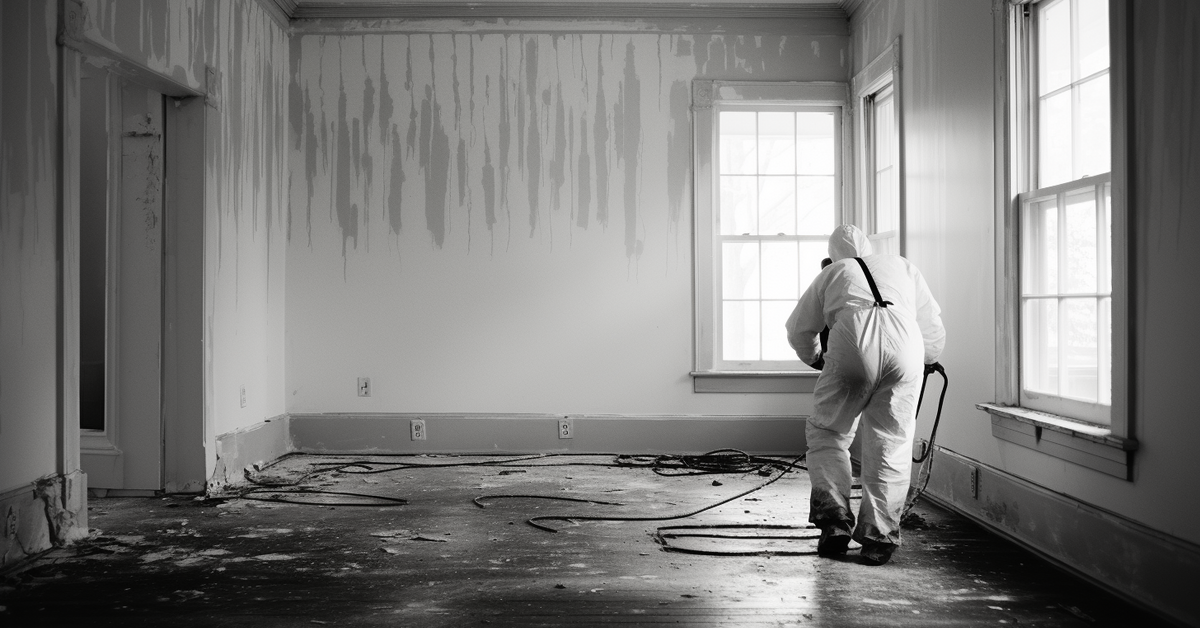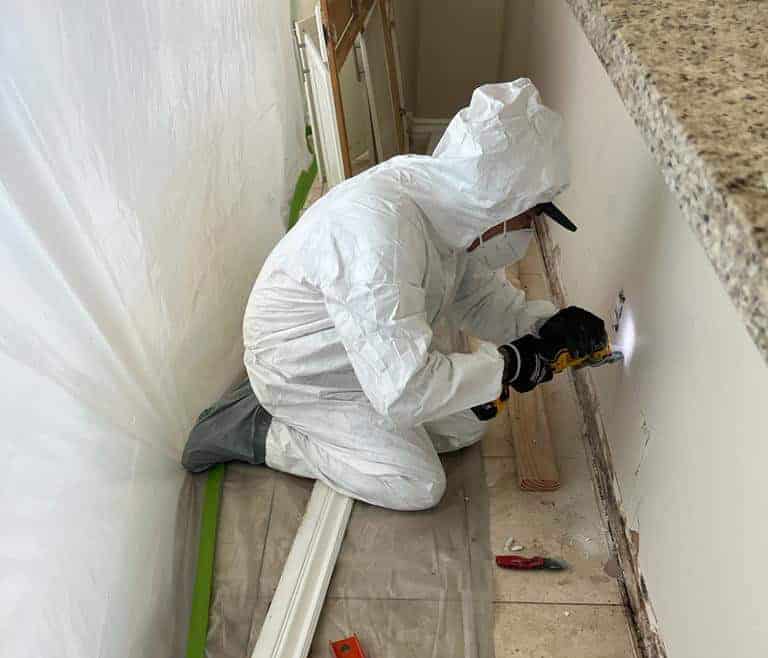Comprehending the Expenses Involved in Professional Mold Removal
Comprehending the Expenses Involved in Professional Mold Removal
Blog Article
Recognizing the Health And Wellness Risks Associated With Mold And Mildew Elimination in Your Home
Mold and mildew elimination in homes, while required for keeping a healthy and balanced living atmosphere, lugs with it an array of health risks that are frequently underestimated. Comprehending these threats is paramount, as mold and mildew exposure can lead to significant wellness concerns, including allergic reactions and respiratory system problems, which can be especially severe for at risk people. Mold Removal.
Usual Mold Types and Dangers
Mold and mildew, a dangerous presence in numerous atmospheres, materializes in different types, each with its very own collection of risks. Amongst one of the most common kinds are Stachybotrys, Aspergillus, and Penicillium, which are frequently found in buildings and homes. Stachybotrys, often referred to as black mold, flourishes in wet, cellulose-rich materials such as timber and paper. It is notorious for its prospective to create mycotoxins, which can be especially worrisome in indoor setups.
Aspergillus, a highly adaptable mold and mildew, can grow on a variety of surfaces, consisting of walls, fabrics, and ceilings. It prevails in both exterior and interior environments and can proliferate under varied problems. While not all strains of Aspergillus are unsafe, some can launch allergens and toxic substances that may pose problems when inhaled or spoken to.
Penicillium is another usual mold and mildew kind that is defined by its rapid growth and blue or environment-friendly appearance. It commonly colonizes water-damaged products, consisting of rugs, wallpaper, and insulation. The spores of Penicillium are quickly air-borne, making it a relentless threat in endangered interior settings. Each of these mold and mildews requires cautious identification and administration to minimize prospective dangers successfully.
Wellness Risks of Mold Direct Exposure
Understanding the kinds of mold and mildew and their potential dangers sets the phase for taking a look at the wellness risks associated with mold exposure. Mold and mildew, a type of fungus, can grow indoors and become a resource of numerous health and wellness concerns.
Moreover, certain molds produce mycotoxins-- secondary metabolites that can be particularly unsafe when breathed in or consumed. Prolonged direct exposure to these hazardous mold and mildews, such as Stachybotrys chartarum, can cause more extreme health and wellness outcomes, including neurological troubles and endangered immune actions. Infants, the elderly, and individuals with damaged body immune systems deal with enhanced danger of severe wellness issues because of mold and mildew direct exposure.
Recognizing these health and wellness dangers emphasizes the relevance of resolving mold problems without delay and effectively. Acknowledging the symptoms and prospective long-lasting results of mold and mildew direct exposure is important in maintaining a healthy interior environment and protecting personal well-being.
Safe Mold Removal Methods

For porous materials like drywall or rug, elimination and disposal are often the best choices, as mold can permeate deeply. When using chemical mold eliminators or biocides, adherence to manufacturer instructions ensures efficacy and security.
Control of the workspace is an additional critical step. Sealing influenced areas with plastic bed linen stops mold spores from spreading during elimination efforts. In addition, using HEPA vacuum and air purifiers can record air-borne spores, reducing the threat of inhalation. By using these methods, mold and mildew elimination can be implemented securely and successfully, lessening carcinogen.
Safety Gear and Equipment
Efficient mold and mildew removal demands the use of ideal safety equipment and equipment to protect against prospective wellness threats. Mold spores, when disrupted, can become airborne and pose serious breathing problems and allergic responses. Individuals entailed in mold removal should focus on personal safety by equipping themselves with appropriate safety equipment.
Foremost amongst safety gear is the usage of an N95 respirator or an extra robust mask, such as a P100 respirator, to avoid inhalation of mold and mildew spores. These respirators are designed to remove a minimum of 95% of air-borne bits, guaranteeing respiratory protection. Additionally, putting on gloves made from rubber, neoprene, or nitrile is important to prevent skin call with mold and mildew and cleansing options.
Protective clothes, such as non reusable coveralls or clothing that can be quickly washed in hot water, is additionally important to prevent mold and mildew spores from adhering to personal clothes. Safety and security goggles or full-face respirators safeguard the eyes from irritation brought on by mold exposure. In addition, to make certain detailed security, people need to make use of footwear covers or dedicate a set of footwear specifically for mold and mildew removal tasks.
Using these protective steps reduces the threat of health and wellness issues, emphasizing the relevance of thorough prep work in mold and mildew remediation efforts.

Professional Vs. DIY Mold Removal
Professional mold remediation services provide proficiency, advanced devices, and extensive methods to thoroughly remove mold while minimizing wellness risks. Technicians are educated to assess the degree of the mold invasion accurately, determine hidden mold and mildew sources, and carry out effective control measures to stop further spread.
In comparison, do it yourself mold elimination can be an affordable choice but usually lacks the accuracy and thoroughness of professional services. Home owners may not have the required experience to recognize all affected areas, possibly leaving behind mold that can grow back. In addition, improper handling can worsen wellness risks, as disturbing mold and mildew without ideal protective gear can launch spores right into the air, increasing exposure.
Eventually, the selection in between professional and DIY mold elimination must be affected by the scope of the infestation, the health and wellness problems of those click this site in the family, and the homeowner's ability to efficiently handle the removal procedure without endangering safety and security. Mold Removal. Focusing on health and efficacy is critical in this decision

Verdict
Mold and mildew removal in domestic settings positions significant wellness risks, requiring a detailed understanding of these hazards to make sure effective mitigation. Direct exposure to numerous mold types can lead to respiratory system issues and allergic responses, specifically in vulnerable populations.
Mold and mildew elimination in homes, while essential for maintaining a healthy living atmosphere, lugs with it an array of health risks that are commonly underestimated.Understanding the types of see it here mold and their prospective risks establishes the phase for examining the health risks associated with mold exposure.Efficient mold removal demands the use of description proper safety equipment and devices to secure versus prospective health and wellness dangers. Expert mold remediation services provide know-how, progressed tools, and detailed methods to completely get rid of mold while minimizing health risks. Technicians are educated to analyze the level of the mold and mildew invasion accurately, identify hidden mold and mildew resources, and apply reliable control steps to avoid further spread.
Report this page